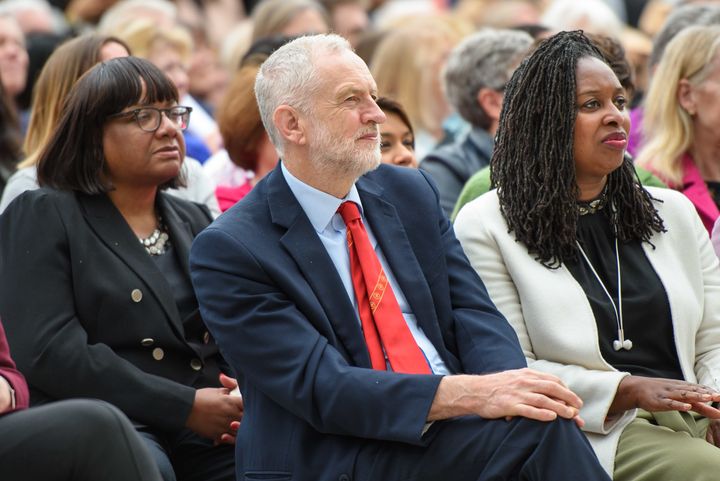
New plans to get more black and minority ethnic Labour MPs in “white” areas across the UK are being drafted by the party’s ruling body, HuffPost UK can reveal.
Targets for the number of Bame candidates in parliamentary selections are among the options being looked at in a bid to mimic the success of the Tories’ “A-list” in getting talented politicians installed in areas where there is no sizeable minority community.
Many of Labour’s current crop of non-white MPs represent constituencies with high proportions of minority ethnic populations, particularly in London and big cities.
But the party’s National Executive Committee (NEC) now wants to ensure that Bame candidates have a stronger chance of being selected in majority-white areas of the country too.
Unlike all-women shortlists, it is illegal to impose all-black shortlists for parliament, but the party believes it can find a policy that complies with the 2010 Equalities Act to set targets in certain areas.
There are also concerns within Labour that its current all-women shortlists system can work against Bame candidates, because white women tend to win seats, sometimes at the expense of local men from black and Asian communities.
On latest figures, 13.8% of the UK population is from a minority ethnic background, but just 8% of MPs are from non-white ethnic backgrounds.
The NEC discussed the issue at its marathon meeting this week, and several members are worried about the Conservatives’ superior record in selecting non-white candidates in majority-white seats in the Home Counties.
Bim Afolami represents the safe seat of Hitchin and Harpenden, with an 89% white population. Kwasi Kwarteng in Spelthorne, Suella Fernandes in Fareham, Priti Patel in Witham and Rishi Sunak in Richmond represent similarly small minority populations.
Kemi Badenoch in Saffron Walden, Adam Afriye in Windsor and James Cleverly in Braintree are other successes in the Tories’ drive to increase Bame representation. Under David Cameron’s “A-list” system, local parties were encouraged to support highly rated contenders with minority backgrounds.
On Tuesday, the NEC considered a motion submitted for this year’s annual conference which sought to “rectify the under-representation of Bame candidates by designating Bame representation priority areas in which shortlists shall have a fixed number of places are for Bame candidates”.
The local Labour party behind the idea will be asked to amend the motion this week. If it refuses, the party centrally will draft a fresh wording in line with the 2010 Equalities Act.
“There was broad support at the NEC that we need to go a lot further on getting Bame candidates selected, as the current trajectory of selections in first and second tranche seats is very poor,” one NEC source said.
“There are fears that the Tories are better than us at getting Bame people in seats with little or no Bame population. We are looking at target areas, a sort of Labour version of the Tory A-list.
“There are also worries that all-women shortlists work against Bame, because it’s white women who tend to win those seats and they regularly end up blocking Bame men.”
A Labour source said the NEC wants to bring a rule change with revised wording that could allow the reform to be passed in the coming week.
Some activists have called for a parliamentary equivalent of the “Rooney Rule”, the American football requirement for teams to interview a certain percentage of minority ethnic candidates for head coaching and senior jobs. Several companies such as Facebook have similar rules.
The party believes that it can get greater representation through a series of area targets, and staff are being asked to urgently draft proposals.
Tulip Siddiq, Labour MP for Hampstead and Kilburn, revealed last year that even though she had grown up in the area, some senior party figures felt the area was not “ethnic” enough for her to poll well. She claimed she was taken aside and asked whether she “would be better off running somewhere else”.
Thirty-one (59.6%) of the 52 minority ethnic MPs at present are Labour, and 18 are Conservatives. There are three Liberal Democrat MPs with an ethnic minority background. Exactly half of the 52 are women.
UPDATE: The NEC agreed on Friday night to recommend new rules for BAME selections.
The wording agreed by the meeting, and which will go forward to a vote at conference this week, states:
“In addition to the use of all-women shortlists to rectify the under-representation of women in elected public office, the party will seek to rectify the under-representation of BAME candidates by designating BAME representation priority selections in which shortlists shall have a fixed minimum number of places reserved for BAME candidates, to the extent allowed by the Equality Act 2010.”
